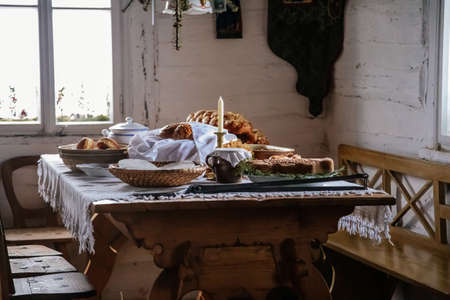Origins of Rustic Charm in British Cottages
The timeless appeal of rustic charm finds its earliest roots in the traditional British countryside cottage. These humble dwellings, scattered across rolling hills and meandering country lanes, were shaped by necessity and local resources. At the heart of their design lies a deep respect for natural materials—stone quarried from nearby fields, hand-hewn timber beams, and lime-washed walls that breathe with the changing seasons. The craftsmanship of these cottages reveals a practical ingenuity; every element was built to last, often passed down through generations with careful maintenance and thoughtful repairs. Rural aesthetics were never about opulence but about creating warmth, comfort, and durability in harmony with the landscape. This approach laid the foundation for what we now recognise as rustic style: a celebration of authenticity, texture, and the enduring beauty found in simplicity.
2. Key Features of Classic British Rustic Interiors
Classic British rustic interiors are renowned for their timeless warmth and understated elegance. Drawing inspiration from the countryside and rural life, these interiors focus on authenticity, comfort, and natural materials. Below, we explore some of the signature elements that define this beloved style.
Signature Elements of British Rustic Charm
| Feature | Description |
|---|---|
| Exposed Beams | Often crafted from aged oak or pine, exposed beams are a hallmark of rustic cottages. These structural elements not only support the architecture but also introduce character and a sense of history to any space. |
| Flagstone Floors | Durable and practical, flagstone floors are commonly found in kitchens and entrance halls. Their natural texture and cool tones provide a hard-wearing surface while complementing the earthy palette typical of British rustic homes. |
| The Aga Cooker | No traditional country kitchen is complete without an Aga cooker. Originally designed in Britain, this cast-iron stove radiates gentle heat and serves as the heart of the home—perfect for both cooking and gathering around on chilly evenings. |
Creating Warmth and Hospitality
The interplay of these features forms an inviting atmosphere central to rustic charm. Exposed beams draw the eye upward, enhancing spaciousness while retaining cosiness. Flagstone floors ground the room with their tactile appeal, often softened by woven rugs in muted patterns. The Aga cooker’s steady warmth becomes a focal point, encouraging family and friends to linger in the kitchen—a true hub of British domestic life.
Enduring Appeal in Modern Homes
Today’s home trends continue to borrow from these classic elements, blending them with contemporary comforts for a look that feels both rooted and relevant. Whether renovating a period cottage or adding rustic touches to a new build, embracing these quintessential features creates spaces that exude welcome and tradition, reflecting the enduring legacy of British rustic interiors.
![]()
3. Evolution Through the Victorian and Edwardian Eras
The rustic charm that once defined humble British cottages underwent a notable transformation during the Victorian and Edwardian periods. As Britain entered a time of rapid industrial advancement, the nation’s tastes shifted, yet the essence of rustic design endured—adapting to new sensibilities and technologies. The Victorian era, in particular, saw an eclectic mix of styles, but amid all the grandeur and ornamentation, there remained a fondness for natural materials and handcrafted details reminiscent of rural roots.
One of the most influential movements to shape rustic style during this era was the Arts and Crafts movement. Born as a reaction to industrial mass production, this movement championed traditional craftsmanship, honesty in materials, and simple yet beautiful forms. Designers such as William Morris advocated for interiors that celebrated wood grain, exposed beams, and hand-forged metalwork—features that had always been at home in British cottages but were now elevated to fashionable status among urban dwellers.
Throughout both eras, homeowners began to incorporate these rustic elements alongside new innovations like improved heating, indoor plumbing, and gas lighting. This blend of old and new allowed the rustic aesthetic to evolve: timber panelling appeared in drawing rooms, stone fireplaces became centrepieces in city homes, and earthy colour palettes brought warmth to even the grandest London townhouses.
By the time Edwardian tastes took hold, there was a greater emphasis on lightness and airiness within interiors. Rustic charm was expressed through lighter woods, painted finishes, and floral motifs inspired by the countryside. The preference for open-plan living spaces also echoed the communal spirit found in traditional cottages while still accommodating modern conveniences.
This period marked a turning point where rustic style was no longer confined to rural settings but instead became a desirable feature across all levels of society. It set the stage for future generations to reinterpret rustic charm according to contemporary needs while staying true to its British heritage.
4. Rustic Charm in the Modern British Home
Today’s British homeowners are increasingly drawn to the timeless appeal of rustic charm, yet they strive to balance tradition with the demands of contemporary living. This harmonious blend allows for the warmth and character of countryside cottages to infuse modern spaces, creating homes that are both inviting and functional. The approach typically involves carefully selecting materials, textures, and features that evoke rustic roots while ensuring comfort and convenience are never compromised.
Embracing Natural Materials
Natural materials remain at the heart of rustic design. Exposed wooden beams, stone accent walls, and reclaimed timber floors are frequently incorporated into new-builds and renovations alike. These elements pay homage to the craftsmanship of the past while contributing to a sense of solidity and longevity in the home.
Mixing Old and New: A Practical Table
| Traditional Element | Modern Integration |
|---|---|
| Exposed Brickwork | Paired with sleek lighting or minimalist furniture |
| Cottage-style Fireplaces | Fitted with efficient wood-burning stoves or bioethanol inserts |
| Butler Sinks | Set within contemporary cabinetry and quartz worktops |
| Antique Furnishings | Mixed with modular sofas and open-plan layouts |
The Role of Colour and Texture
Modern rustic interiors often utilise a muted palette inspired by nature—think sage greens, warm greys, and creamy whites—to provide a calming backdrop. Textural contrasts are key: rough-hewn wood sits alongside soft wool throws, while hand-thrown ceramics complement sleek glass or metal fixtures.
Sustainability as a Guiding Principle
An increasing number of UK homeowners choose rustic features not only for their aesthetic appeal but also for their environmental credentials. Reclaimed materials, upcycled furniture, and local craftsmanship support sustainability—a value closely aligned with traditional rural life.
Conclusion: The Best of Both Worlds
The modern British home successfully bridges old-world charm and 21st-century comfort by thoughtfully weaving rustic elements into contemporary design. This careful curation allows residents to enjoy the nostalgia of cottage life without sacrificing modern efficiencies, ensuring that rustic charm remains an enduring trend across Britain.
5. The Role of Sustainability and Local Craft
In today’s reinterpretation of rustic charm, sustainability has taken centre stage, echoing the resourcefulness that once defined traditional British cottages. Homeowners now place a premium on environmentally responsible materials, choosing reclaimed timber, natural stone, and locally produced furnishings that reflect both heritage and eco-conscious values. Supporting British craftsmanship is equally vital—skilled artisans and small-scale makers are championed for their dedication to quality, authenticity, and local tradition. This shift not only reduces environmental impact but also fosters stronger community ties, as every handcrafted item tells a story rooted in the UK’s rich cultural landscape. Rustic interiors now often feature bespoke joinery, hand-thrown ceramics from local potteries, and upcycled vintage finds sourced from regional markets or workshops. By blending sustainable practices with an appreciation for homegrown talent, contemporary rustic homes honour the legacy of the past while paving the way for a more mindful future—where every detail is chosen with care for both planet and people.
6. Rustic Charm in British Pop Culture and Media
Rustic charm has found a devoted audience through the lens of British pop culture, where films, television, and print media have played pivotal roles in popularising this timeless aesthetic. Iconic period dramas such as Pride and Prejudice and Downton Abbey have transported audiences to idyllic countryside settings, showcasing traditional cottages, exposed beams, and weathered stonework as aspirational backdrops to classic British storytelling. These on-screen depictions not only evoke nostalgia for a bygone era but also ignite a desire to recreate similar environments in modern homes.
The Influence of Home Makeover Shows
Contemporary home makeover programmes like Escape to the Country and The Great Interior Design Challenge bring rustic interiors into living rooms across Britain. Through expert advice and creative transformations, these shows demonstrate how elements such as reclaimed timber, vintage furniture, and heritage colour palettes can be integrated into urban flats or suburban semis. Their practical tips empower viewers to infuse their own spaces with the warmth and character of rural life, making rustic charm accessible regardless of location.
Magazines and Editorial Inspiration
British lifestyle magazines—Country Living, Homes & Antiques, and The English Home, among others—regularly feature editorial spreads that celebrate rustic style. From photo essays on historic cottages to guides on upcycling old furniture, these publications curate inspiration for readers eager to blend authenticity with contemporary comfort. Their focus on craftsmanship, sustainability, and local heritage reinforces the enduring appeal of rustic aesthetics in British culture.
A Lasting Cultural Legacy
Together, films, television, and magazines have ensured that the rustic look is much more than a fleeting trend; it is embedded within the cultural fabric of Britain. By continually spotlighting the beauty of natural materials and timeworn finishes, British media both preserve tradition and encourage ongoing innovation within home design. As a result, rustic charm remains a beloved style—rooted in history yet constantly evolving through popular imagination.


